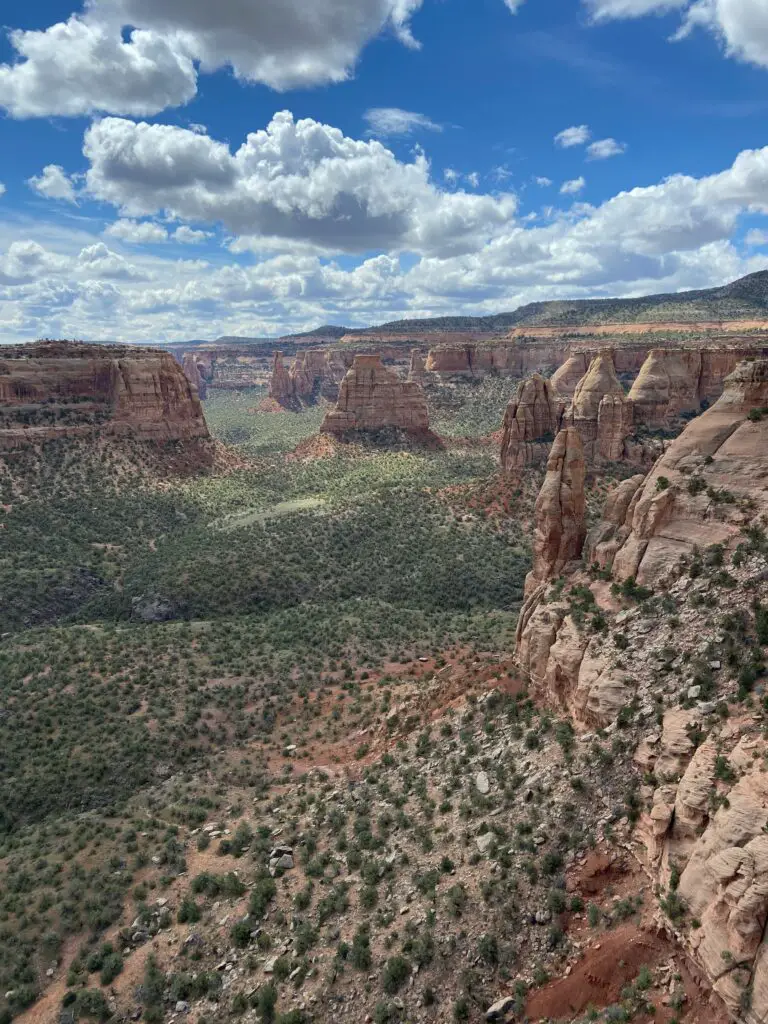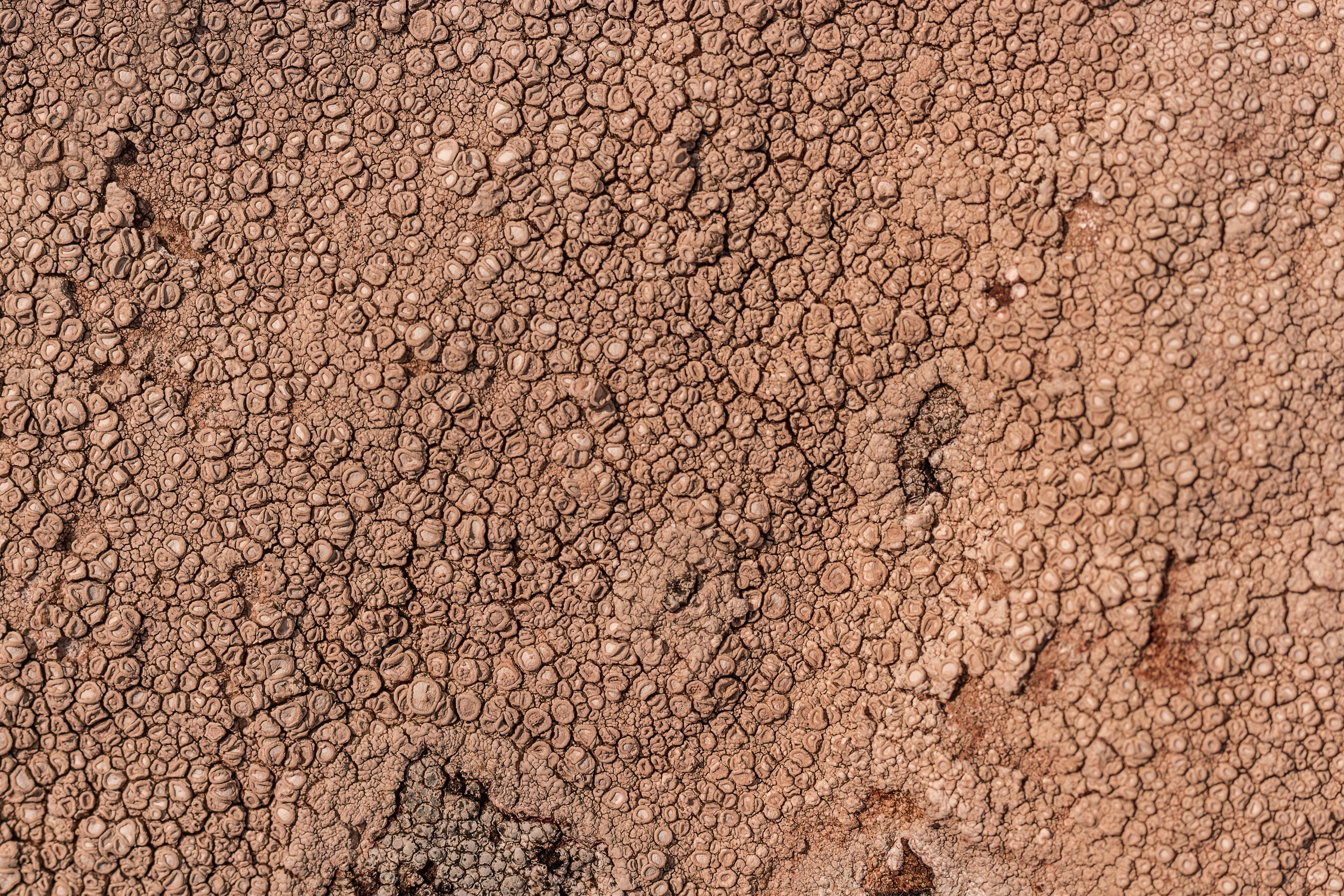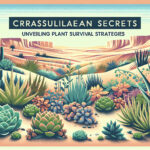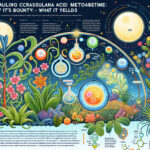Introduction to CAM: A Botanical Marvel
Imagine a plant that thrives under the scorching sun, arms itself against drought, and still performs the magical act of photosynthesis with a groundbreaking twist. This is the world of Crassulacean Acid Metabolism, or CAM for short — a remarkable adaptation that some might call nature’s backdoor to survival in extreme environments.
At the heart of this story is a unique process that turns the conventional method of photosynthesis on its head. During the heat of the day, when most plants are eagerly absorbing sunlight, CAM plants play it cool — quite literally — keeping their stomata tightly closed to conserve precious water. But come nightfall, these hardy survivors open up, breathe in the carbon dioxide, and prepare the stage for the next day’s energy production.
From the succulent plant collections adorning sun-drenched windowsills to the vast deserts teeming with life, CAM is a photosynthetic adaptation that’s as ingenious as it is essential. It’s a story of endurance, efficiency, and evolution — traits we might draw inspiration from in our own lives.
So, how exactly do CAM plants perform this nocturnal act of botanical wizardry? Learn more by diving into an engaging visual representation:
Understanding CAM’s role in plant resilience not only fascinates botanists but also provides valuable insights into sustainability and agriculture. In a world where water is becoming an ever-scarce resource, these plants offer a blueprint for survival strategies that could be pivotal for future food security.
As we delve deeper into the remarkable world of photosynthesis adaptations, let’s keep in mind that these natural phenomena are more than just scientific curiosities. They represent the innovative spirit of life, finding a way against all odds — a principle as applicable to the natural world as it is to our human endeavors.
The Evolution of Crassulacean Acid Metabolism
Let’s embark on a journey through time and explore the remarkable evolutionary tale of Crassulacean Acid Metabolism (CAM). Imagine a world where water is scarce, and the sun’s rays bake the soil to a crisp. It is in these challenging environments that CAM plants not only survive but thrive. These adaptive maestros have honed a photosynthetic strategy so ingenious that it has captivated scientists and plant enthusiasts alike.
The birth of CAM is a testament to nature’s ability to mold and refine life processes in response to environmental cues. When ancestral plants encountered arid conditions, the merciless competition for survival inspired a creative solution: shift the stomata’s opening to the coolness of night to minimize water loss, while storing the precious CO2 for daylight’s photosynthesis. This elegant nocturnal CO2 capture is the cornerstone of CAM, and it’s a prime example of how necessity truly is the mother of invention.
Now, consider the lush rainforests where water abounds, yet some plants still employ CAM. Why? It boils down to the competitive quest for light. Nestled among towering trees, light is a limited commodity. CAM becomes a resourceful strategy, allowing plants like the bromeliads to operate with high water-use efficiency even when the forest floor’s filtered light offers precious little photosynthetic fuel.
Our planet is dotted with CAM champions. From the succulent leaves of the jade plant to the agave’s spiky silhouette, these plants exemplify evolutionary success. Each one has tailored CAM to suit its unique habitat. For instance, the prickly pear cactus endures the Mojave’s furnace-like daylight by tightly closing its stomata, confidently relying on its nocturnal CO2 reserves. This specialization is a perfect illustration of the adaptive prowess of CAM plants, turning ecological adversity into a thriving opportunity.
The diversity of CAM plant forms and the myriad of habitats they conquer speak to CAM’s widespread evolutionary triumph. Even in today’s ever-shifting climate, CAM plants stand as resilient sentinels, often representing beacons of hope for ecosystems grappling with the specter of drought. Their sophisticated water conservation makes them not just survivors, but ecological influencers, shaping and sustaining the landscapes they inhabit.
The legacy of CAM is inscribed in the enduring narrative of life. Its story isn’t simply one of radical adaptation but one of relentless innovation. As we delve deeper into the world of plant survival strategies, it becomes increasingly clear that CAM is not just a biological process; it’s a chronicle of life’s indomitable spirit.
Crassulacean Acid Metabolism Explained
Imagine a world where the sun scorches the earth during the day, leaving little mercy for the living organisms trying to survive. This is the harsh reality for plants in arid environments, where water is like gold and each drop counts. It’s here that we find the remarkable process known as Crassulacean Acid Metabolism (CAM), a survival strategy that’s as fascinating as it is vital.
At its core, the CAM process is a masterclass in resource management. When the nightlife wakes and the moon takes over the sky, CAM plants come alive in their unique way. They open their stomata – tiny openings usually used for breathing – but instead of gasping for air, they’re quietly sipping in carbon dioxide. With the cool night air, they minimize water loss, a trade-off other plants wouldn’t dare to make in the daytime heat.
What happens next is pure nighttime alchemy. These plants take the collected CO2 and store it in the form of an acid, cleverly putting it away like a squirrel with its acorns. Then, when the sun returns and other plants begin their day, CAM plants close their stomata to keep every precious drop of water in. But the show’s not over! With their stored carbon in hand, they’re ready to perform photosynthesis during the daylight hours, all while their stomata remain comfortably shut.

This ability to decouple carbon dioxide intake from photosynthesis allows CAM plants to thrive where others would shrivel. It’s like being able to eat your cake and have it too—but for plants, the cake is water, and they’re not sharing a crumb. So the next time you admire a succulent or cacti, remember, they’re not just sitting there looking pretty. They’re showcasing nature’s ingenuity, teaching us a lesson in how to not just survive, but flourish with what you have, when you have it.
Spotlight on CAM Plants: Desert Survivors
Imagine stepping into a landscape where the sun beats down with relentless intensity, the air is dry enough to wick moisture from your very skin, and the sprawling vistas are punctuated by life adaptative enough to thrive where few others can. Yes, we’re talking about deserts, the stage for some of the most resilient flora on our planet: plants that utilize Crassulacean Acid Metabolism, or CAM for short. Let’s plunge into the fascinating world of these spectacular survivors.
At the heart of their survival strategy lies CAM, a nifty physiological process that lets plants like succulents and cacti conserve water while still performing photosynthesis. During the blistering daytime, when other plants would open up their stomata (tiny pores on their leaves) to take in carbon dioxide, CAM plants buck the trend. They keep their stomata comfortably shut, avoiding water loss and lounging like sunbathers under a parasol.

The real hustle begins at night when the desert cools and the CAM plants open their stomata to collect CO2. This carbon dioxide is stored as malic acid, hiding it away safely like desert treasure, only to be used during the day for photosynthesis. It’s a spectacular adaptation that turns the seeming misfortune of desert dwelling into a masterstroke of survival.
Take, for instance, the iconic saguaro cactus standing tall with its accordion-like ridges, or the plump leaves of the jade plant, each a marvel of the CAM approach. These plants don’t just survive in their hot and arid homes; they reign supreme, thanks to their extraordinary ability to capitalize on the coolness of desert nights and the stillness of its days.
Succulents, with their gel-filled leaves, act like nature’s water bottles, storing the precious liquid in their thick, fleshy tissues. Even more extraordinary, some CAM plants can switch from regular photosynthesis to the water-wise CAM method when the going gets tough, showcasing a dazzling versatility that’s as practical as it is impressive.
The Quintessence of Adaptation
Deserts may be inhospitable for most, but for CAM plants, they are a playground of opportunity. These plants are the living embodiment of adaptation and efficiency. They teach us that even in the harshest of conditions, life not only endures but also innovates, evolving ingenious methods to carve out an existence. In the realm of the arid and the extreme, CAM plants are a shining example of nature’s ingenuity and the endless variability of life.
Comparing CAM to Other Photosynthetic Processes
Imagine you’re stranded in a desert, the sun beating down mercilessly, and your only hope for survival is the water you can carry. Much like you in this scenario, some plants have adapted to survive in such arid conditions. Among these are the resourceful CAM plants, employing what is known as Crassulacean Acid Metabolism (CAM to the friends). But how does this witty botanical adaptation stack up against its photosynthetic counterparts, C3 and C4 processes?
First off, let’s set the scene for the CAM plants. They’re the desert warriors, thriving where others would shrivel up and concede. These plants, like the tenacious cacti and seductive succulents, have rigged the system to photosynthesize in drought conditions. When the day’s heat would cause most plants to lose precious water, CAM plants shut their stomata tight, like closing the windows during a sandstorm.
Now, pivot to the more common C3 plants – your typical sun-loving leafy greens. These plants throw their stomata wide open during the day, taking in CO2 and synthesizing it into glucose. It’s like making lemonade on a leisurely sunny afternoon. However, this laissez-faire attitude comes with a cost – they lose a lot of water in the process, which is why they fancy wetter environments; a rainforest or meadow suits them just fine.
Then there are the C4 plants – the athletes of the plant world, efficient and precise. Picture the maize or sugarcane, the sprinters that rapidly capture CO2, even in high temperatures and intense sunlight. They’ve got a special way to minimize water loss and avoid an unwanted byproduct called photorespiration, akin to a runner avoiding cramps.
So, as you can already tell, CAM is like the survivalist of the trio, hoarding CO2 at night to use during the day while keeping their water stores locked away. C3 plants, while effective, can be a tad wasteful with water. And C4? They might be the most water-efficient during the day, but they don’t hold a candle to CAM plants when it comes to thriving in the oven of the desert.
The genius of CAM, however, isn’t without its drawbacks. It’s a bit slower in the race; these plants grow at a snail’s pace because their night-time shenanigans limit the amount of CO2 they can store. It’s like a strategic game of resource management – they may survive longer but won’t win any growth speed records.
In the diverse realms of our planet, each photosynthetic process has carved out a niche. The C3 plants dominate in cool, moist areas, the C4 in warm, sunny regions, and the CAM plants reign over the drought-stricken deserts. Every method has its place and purpose, showcasing the extraordinary adaptability of plant life on Earth.

When you next sip on a cool drink beneath the scorching sun, spare a thought for the ingenious CAM plants. Their mastery of moisture conservation is a lesson in resilience and efficiency, one that could even inspire solutions in our quest for sustainability. After all, if a plant can outsmart the desert, who’s to say what else we could learn from nature’s playbook?
The Impact of CAM on Ecosystems and Agriculture
Welcome to a journey through the world of Crassulacean Acid Metabolism—or CAM for short—a remarkable plant adaptation that has profound implications for ecosystems and agriculture, particularly in arid landscapes. Let’s delve into how these resourceful plants have tailored their photosynthetic process to thrive under the scorching sun and what this means for our future food security.
Crack the Code of CAM: A Survival Strategy in Arid Environments
In the game of survival, CAM plants have a distinct advantage. Picture a landscape baked by relentless heat, where water is as precious as gold. Here, CAM plants have evolved a water-saving photosynthesis strategy to cope with the harsh conditions. Unlike their cousins that leave their stomata open during the day, CAM plants open theirs at night when evaporation rates are lower. This clever nocturnal tactic allows them to conserve precious moisture while still capturing the carbon dioxide needed for photosynthesis.
Real-life examples of CAM plants, like the resilient cacti and the tough-as-nails agave, illustrate nature’s ingenuity. These plants not only survive but also flourish where others would quickly perish. Their ability to store water in their tissues makes them the ultimate battlers against drought.
Green Architects of Ecosystems: CAM Plants’ Role in Biodiversity
CAM plants are not just lone warriors; they are ecosystem engineers. In arid environments, they serve as a cornerstone for biodiversity, providing habitat and sustenance for a variety of wildlife. Take, for instance, the majestic saguaro cactus, which stands tall as a beacon of life in the Sonoran Desert. Its flowers and fruits are a banquet for birds and mammals, while its hollowed arms offer shelter—a desert oasis in its truest form.
These plants do more than just offer a helping hand to fauna; they also condition the soil, pave the way for other plant species to establish, and help to stabilize the ecosystem. They are the unsung heroes keeping the arid lands alive and kicking.
CAM’s Agricultural Promise: Breeding the Crops of Tomorrow
Imagine a future where our fields are filled with crops that barely bat an eyelid at droughts—this could be the reality with CAM on our side. Researchers are exploring the possibility of transferring CAM traits to traditional crops, crafting a new generation of drought-resistant superplants. The potential benefits for agriculture, especially in regions plagued by water scarcity, are staggering.
Such an innovation could revolutionize the way we grow food, making agriculture more sustainable and secure in the face of climate change. In parts of the world where hunger is a constant threat and rain is a fickle friend, CAM-inspired crops could turn the tide in the battle for food security.
No conclusion is needed here as we continue to explore the fascinating world of “what is crassulacean acid metabolism”. The resilience, diversity, and agricultural potential of CAM plants represent a natural innovation that may hold the key to sustainability in our ever-changing world. So, the next time you encounter a succulent or a prickly cactus, remember that you’re looking at a master of metabolic magic—an organism that’s cracked the code of survival in the most unforgiving places on Earth.
FAQs: Demystifying Crassulacean Acid Metabolism
Ever wondered how some plants thrive in arid, unforgiving environments? Look no further than the fascinating world of Crassulacean Acid Metabolism (CAM), a true testament to nature’s ingenuity. Let’s unpack this remarkable survival strategy with some of the most common questions people have about CAM!
What exactly is Crassulacean Acid Metabolism?
Imagine a plant that has its own built-in water conservation system, much like a camel traversing the desert. That’s CAM for you – a specialized form of photosynthesis where plants open their stomata at night to take in CO2, reducing water loss significantly. By day, they convert the stored CO2 into sugars. It’s like having a rainwater tank that collects and stores water for the driest of days.

Which plants use this superpower?
If you’ve ever admired a succulent’s ability to stay plump despite the scorching sun, you’ve witnessed CAM in action. Plants such as cacti, pineapple, and some orchid species have harnessed this mechanism to survive where water is a luxury. Next time you encounter a lush succulent, remember it’s not just a pretty face – it’s a master of moisture management!
Is CAM a common plant adaptation?
With over 6% of plant species using this survival strategy, CAM is relatively common among certain plant families adapted to water-limited environments. So, while it’s not the norm for all plants, for the cactus you got from the nursery or the pineapple you enjoy on a warm day, it’s a game-changer. It’s like a secret society of flora that’s learned to dance in the drought.
How does CAM benefit the environment?
Beside the obvious lifeline it offers to the plants it supports, CAM plays a major role in stabilizing ecosystems. In areas like deserts and rocky outcrops, CAM plants provide food and habitat for other species, creating oases of biodiversity. They’re the unsung heroes that keep the environment ticking even when the going gets tough.
Armed with answers to these common queries, you’re now a step closer to understanding nature’s remarkable mechanisms for survival. Crassulacean Acid Metabolism isn’t just a mouthful to say; it’s a profound example of life’s resilience and adaptability. So, the next time you see a desert plant, tip your hat to its savvy survival skills!



